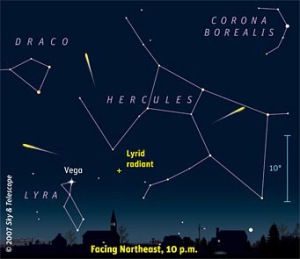May is a popular and busy month for astronomers consisting of these events:
- May 3rd – New moon will take place at 06:01 hours
- May 10th – First Quarter will take place at 20:33 hours
- May 17th – Full moon will take place at 11:09 hours
- May 24th – Last Quarter phase takes place at 18:52 hours
Moon Facts!

- The time it takes for the moon to do a complete orbit around the Earth is 27.3 days.
- The distance from Earth to the moon is around 238,900 miles! (Or 384,000 kilometers!)
- The moon has 1/6 the gravity compared to that on Earth.
- The moon orbits the Earth at around 2,300 miles per hour.
- The Surface area of the moon is around 9.4 billion acres (Or 14,658,000 square miles)
- Only 59% of the moons surface can be seen on Earth.
- We always see the same side of the moon. The other part is hidden from us!
- The moon has no global magnetic field.
Eta is beta:
Eta Aquarids brief but bright meteors descend from the infamous Halley’s Comet. It will consist of around 20 to 40 meteors hourly.
When:
The meteor shower peaks on the 5th and 6th of May. The show will end around the 28th of May.
Where:
The shower will be in the eastern sky, found in the constellation Eta. There will be a thin crescent moon present in the early mornings for a couple of days, making it perfect to view the shower!
Happy Astronomy Day!
On May the 7th, astronomers all over the world will be celebrating “Bringing astronomy to the people”. People celebrate by setting up events and parties for the public. Astronomy day also helps to bring people together and inspire the public to get more involved. So get in and celebrate astronomy your own way!
Triple conjunction between Mercury, Venus and Jupiter.
The three planets will line up and form a 2 degree vertical line. Mars may also be seen from a different part of the sky. It is fairly easy to view in eastern skies at dawn with the naked eye on May the 11th.








